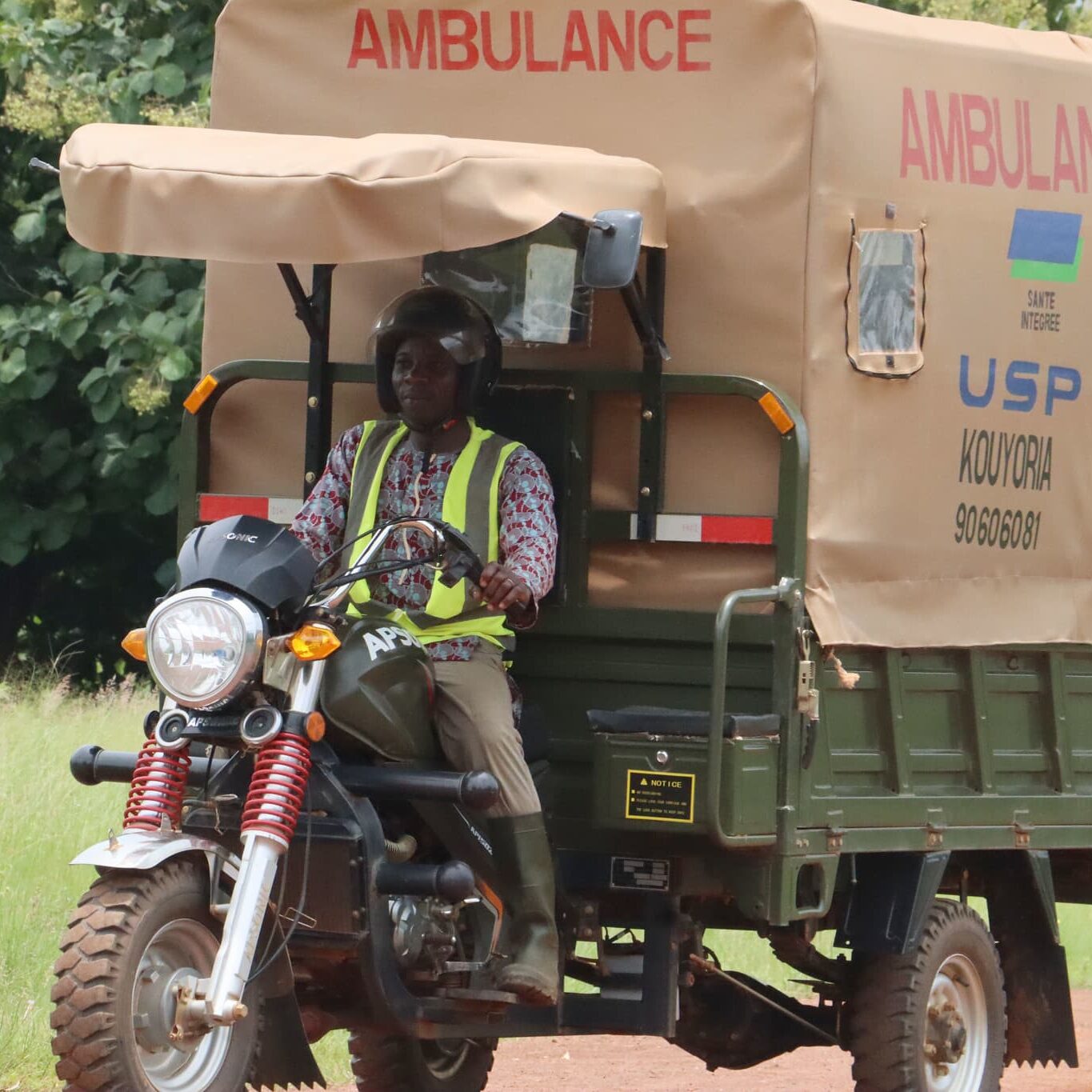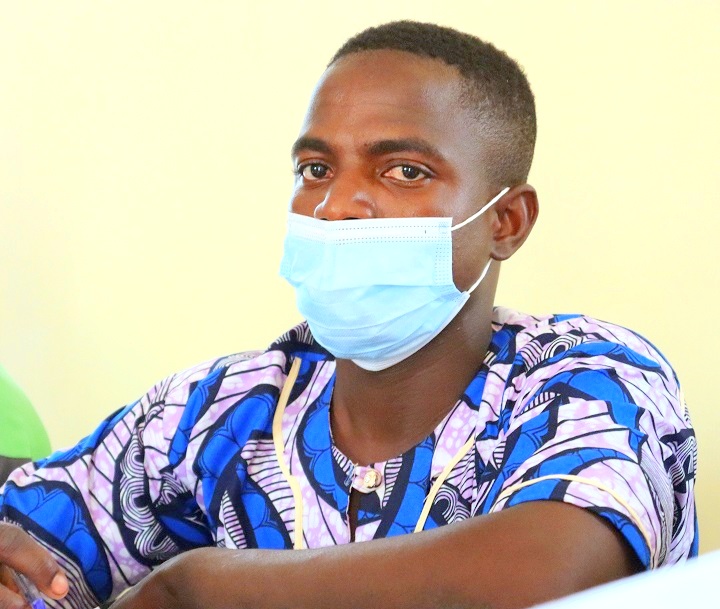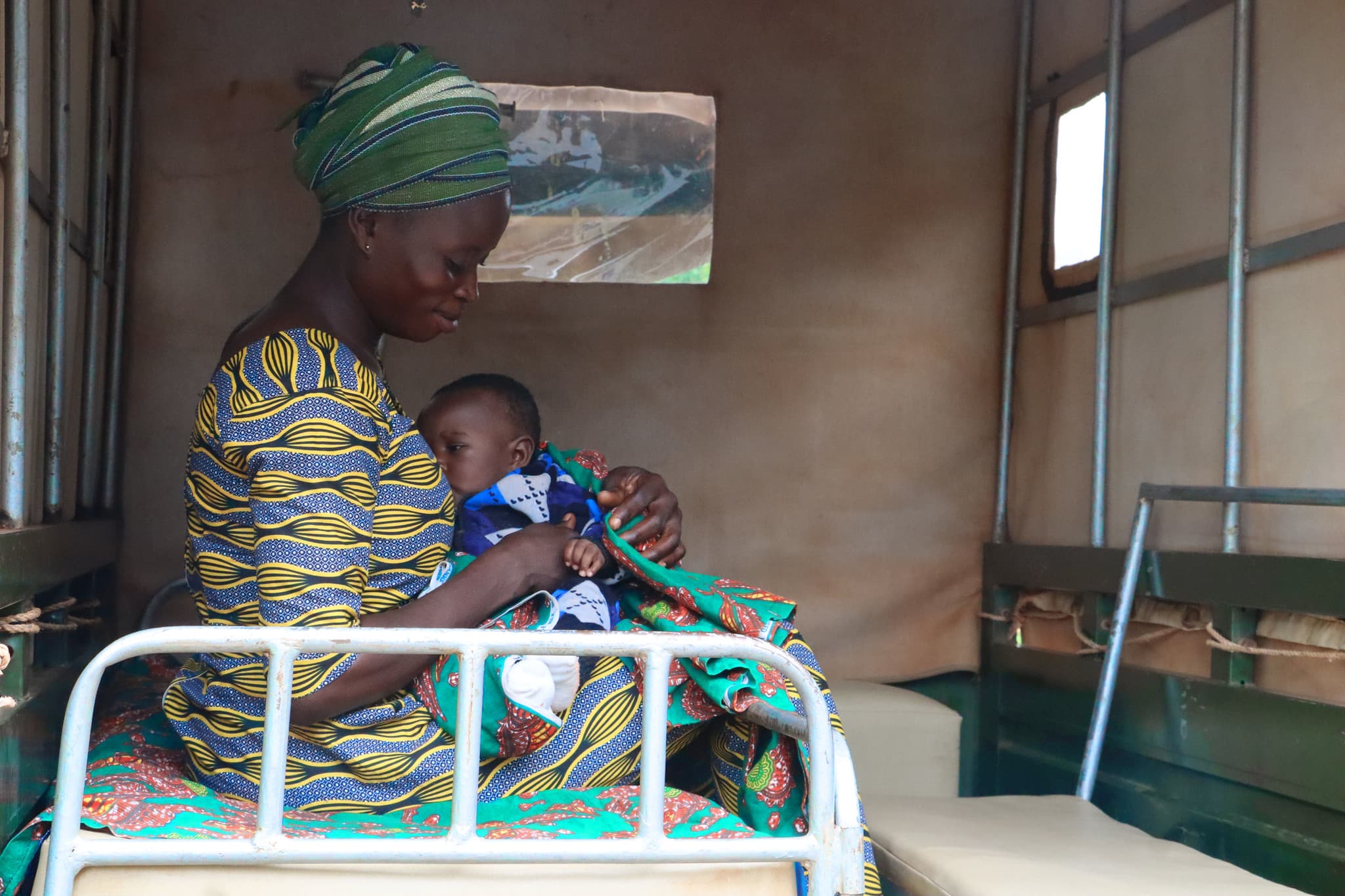Togo rural emergency transport
Established in 2015 to combat the high rates of maternal and neonatal mortality in rural Togo, our ambulance program does more than just transport patients; the program connects remote communities to the essential care they critically need. By providing rapid, reliable, and free transportation, we are improving health outcomes by ensuring timely access to much-needed care.

Breaking barriers to care: distance and cost
With the ambulance program, our approach is two-fold: reduce the physical distance to health facilities and eliminate the cost of transport. This innovation, directly incorporated in the Integrated Primary Care Program, uses retrofitted tri-motorcycle ambulances to transport pregnant women across bumpy roads during emergency situations, at no cost to the patient.

of the pregnant women in the catchment area who were estimated to have obstetric complications received timely transportation to healthcare facilities.

pregnant and postpartum women were transported by the ambulance program.
Meet Jean
Explore the inspiring story of Jean, a real-life hero at the wheel of Integrate Health’s rural emergency transport program in Binah, Togo. Jean navigates rugged terrain and remote areas in his community to ensure timely medical assistance, bridging the gap between rural communities and critical healthcare services.


